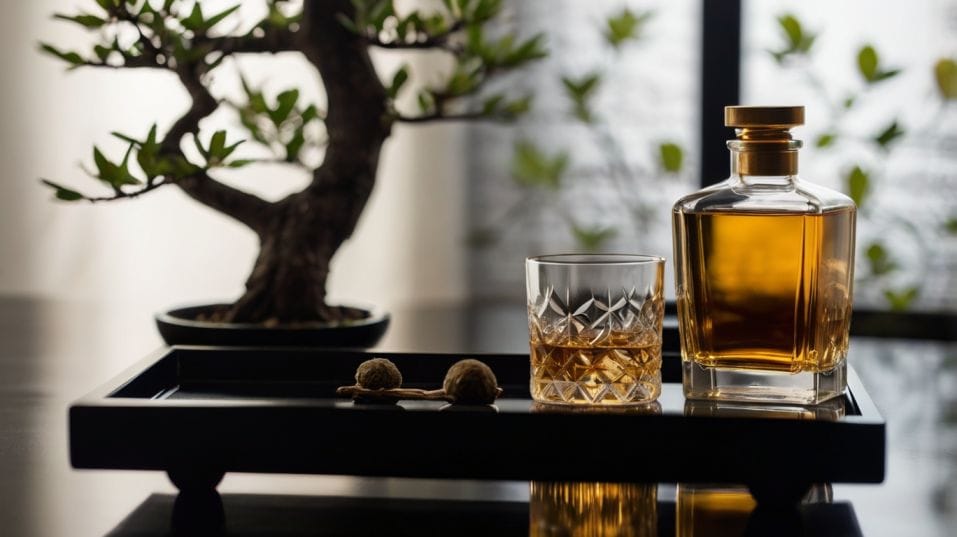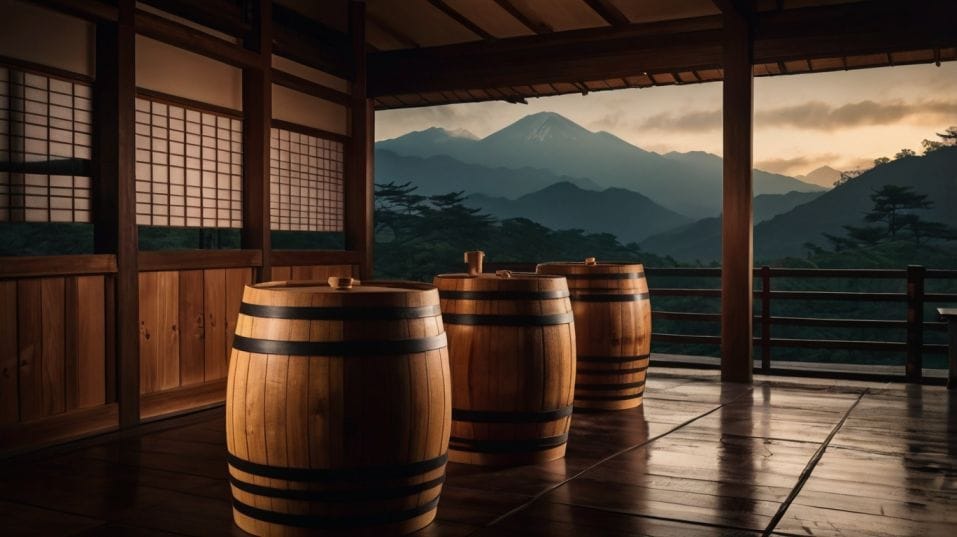Japanese Whiskey: Tradition Meets Perfection
Explore Japanese whiskey with confidence—learn how to taste, choose, and collect bottles built on balance, precision, and quiet mastery.

Ever wonder what makes Japanese whiskey so captivating, even to beginners? It’s not flash or fanfare—it’s quiet mastery.
This is whiskey that rewards focus, not just thirst. If you're early in your whiskey journey, Japanese expressions offer the clearest lens: precise, balanced, intentional.
Every sip teaches you how to taste better. Not louder. Better. Step into a world where detail matters, and discover why serious collectors and new drinkers alike keep coming back.
The Philosophy Behind the Pour
What sets Japanese whiskey apart isn't just ingredients or aging. It's mindset. This is a category rooted in monozukuri—a Japanese concept that translates loosely to “the art of making things,” but goes far beyond technique.
It’s about mastery through repetition, finding beauty in precision, and removing anything that doesn’t serve the end goal.
In whiskey, that means every step—from milling to blending—is approached like a craft worth perfecting, not just producing.
Where some whiskeys lean into volume—louder peat, bigger wood, more sugar—Japanese whiskey leans into balance. It’s engineered for clarity, for harmony. Nothing dominates. Every element supports the whole.
Once you get your head around that, your tasting changes. You stop looking for the biggest note. You start looking for the space between them.

Taste With Intention
When you pour a Japanese whiskey—especially a well-made one—don’t rush. You’re not drinking for a dopamine hit. You’re observing structure.
Smell and Sip Differently
On the nose, expect restraint. Not because the whiskey is bland—it isn’t—but because the aromas are integrated.
Instead of big spice or caramel blasts, you get a calm profile: ripe stone fruit, soft honey, a trace of sandalwood, sometimes a ghost of smoke. Nothing shouts. Everything suggests.
The real education starts on the palate. Texture first: light to medium-bodied, clean, smooth without being slick. Then the flavors arrive, usually in waves.
Bright fruit up front—pear, melon, maybe citrus peel. A soft sweetness through the mid-palate. Then structure. Oak, umami, subtle spice. It might finish dry. It should always finish clean.
You’re not just tasting flavor. You’re tasting sequence. This is whiskey designed to evolve over a few seconds—and over years in the bottle.
So taste it more than once. Different days, different moods, different glasses. Each time reveals something new.
How It’s Made (and Why It Changes Everything)
Understanding how Japanese whiskey is made sharpens your judgment. It helps you separate the well-crafted from the over-marketed. It also gives you the tools to taste like a pro.
Controlled Fermentation and Distillation
Japanese distillers start with similar raw materials as Scotch—barley, water, yeast—but the way they handle them is distinct.
The fermentation is longer and often done at lower temperatures, encouraging complex but subtle esters. The goal isn’t to extract maximum punch, but maximum finesse.
Distillation is usually done in pot stills, but the cuts tend to be cleaner. Where Scottish distillers may prize oiliness, the Japanese aim for elegance.
Multiple still shapes are often used within a single distillery to create a wide variety of spirit types in-house. Unlike Scotland, where independent blenders reign, Japanese producers like to control every input. That’s not ego—it’s intent.
The Role of Oak and Environment
Aging matters too. Casks vary—American oak, sherry, wine barrels, and, famously, Mizunara. Mizunara is a rare Japanese oak that’s hard to work with but adds unmistakable notes of sandalwood, spice, and incense.
Used well, it creates extraordinary depth. Used carelessly, it overwhelms. But what makes Japanese aging truly unique is the climate.
Wide seasonal shifts—hot summers, cold winters—accelerate maturation without sacrificing structure. The result is whiskey that drinks with maturity well beyond its stated age.
Tasting Japanese Whiskey Smarter
Not all Japanese whiskey is created equal—and the category has exploded with demand. That means more options, but also more noise.
Skip the Hype, Follow the Profile
To drink smarter, train your instincts around style, not hype. You want whiskeys that are clean, balanced, and built with restraint.
Avoid expressions that rely too heavily on wine casks or flashy finishes to mask poor fundamentals. A heavy-handed finish is usually a bandage, not a feature.
Pay attention to alcohol by volume (ABV). Many Japanese whiskeys are bottled at 43%, and while that's standard, some exceptional bottles clock in higher and offer more texture and depth without burning.
Higher ABV doesn’t mean better—but in the right hands, it means bolder structure.
Ask the Right Questions
When evaluating a bottle, ask yourself:
- Does this whiskey evolve as I drink it?
- Is it balanced across sweetness, spice, fruit, and wood?
- Can I taste both the spirit and the barrel—without either overwhelming the other?
That’s the mark of something built to last.
Collect With Confidence
If you’re looking to build a collection—not just drink randomly—Japanese whiskey is one of the most rewarding categories. But it requires a mindset shift: don’t chase unicorns. Chase standards.
Know What Ages Well
Look for producers with depth—not just one flashy bottle. Explore age-stated expressions if you can find them, but don’t ignore NAS (non-age-stated) whiskeys that show consistent profile.
The key is repeatability. If a whiskey delivers over multiple batches or years, it’s worth your attention.
Also, know your limits. Some older Japanese expressions fetch absurd prices, but high age doesn’t guarantee quality. You’re better off with a precise 12-year whiskey that reflects house style than a 30-year that’s over-oaked and uneven.
Drink What You Collect
And keep your whiskey moving. These aren’t trophies. They’re teachers. Open them. Taste them over time. Watch how air, oxidation, and mood affect the glass. That’s how you learn.
Final Thoughts
Japanese whiskey teaches patience. It forces you to listen closer, taste sharper, and expect more from your glass. It isn’t built to impress on the first sip—it’s built to reward you on the tenth.
So don’t just read about it. Get your hands on a bottle that shows balance. Pour it clean. Sit down, no distractions. Smell with focus. Sip slowly. Ask yourself: What is this whiskey trying to do?
Then do it again tomorrow. You’re not just drinking. You’re building a palate. You’re building taste. Start today.




